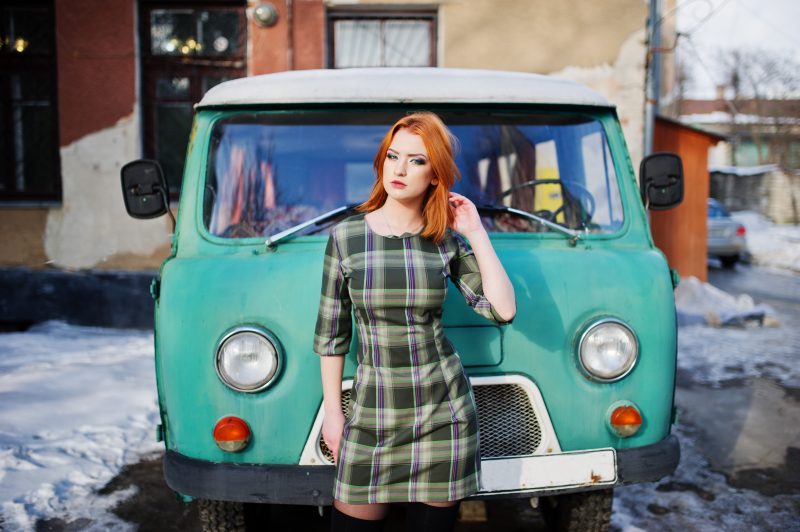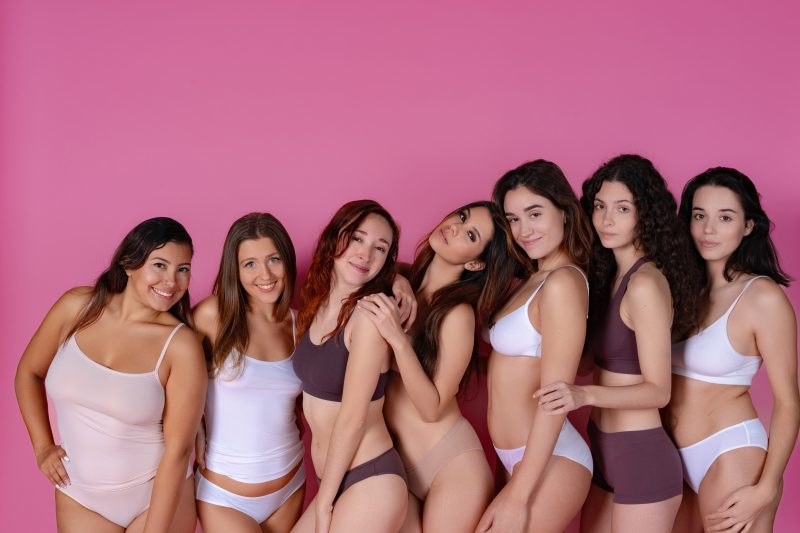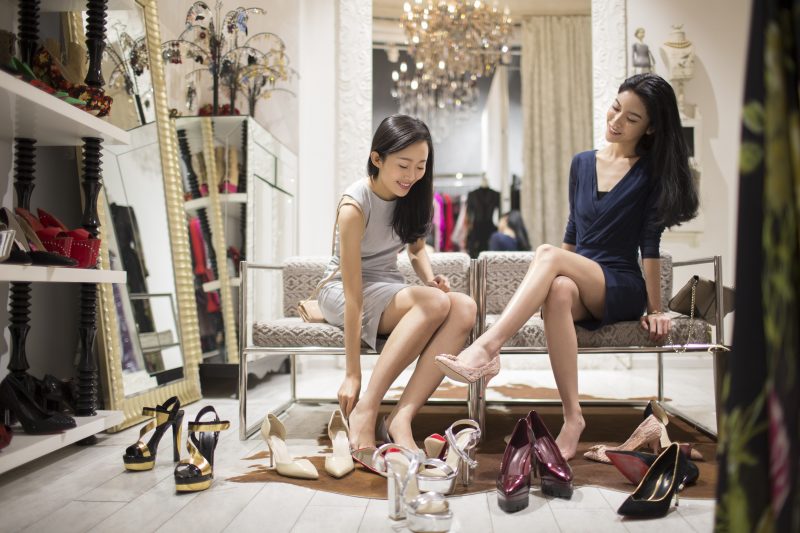It started with a bet in the office kitchen. Three of us standing around, waiting for the ancient kettle to boil, having one of those meandering fashion conversations that somehow turned competitive. I was insisting that certain high street pieces were virtually indistinguishable from their designer counterparts. Sarah, our accessories editor who exclusively wears The Row and vintage Prada (and somehow still manages to pay London rent), rolled her eyes so hard I thought they might get stuck. “Liv, please. Anyone with an eye can spot high street from across the street.”
Our intern Zoe, caught in the crossfire and clearly wishing she’d made her tea ten minutes earlier, mumbled something about her mum always thinking her Mango dresses were designer. And just like that, an idea was born. A proper social experiment. Could people—fashion people, regular people, people who claim to know the difference—actually tell high street from designer when the labels were hidden?
Two weeks later, I found myself in the office meeting room, transformed for the day into a makeshift styling studio, surrounded by rails of clothing. Half designer, half high street, all carefully selected to test our hypothesis. I’d roped in twelve volunteers—a mix of fashion industry insiders and “normal people” (my brother’s description, not mine) who agreed to be our guinea pigs. The rules were simple: examine each pair of similar items, one designer and one high street, and guess which was which.
Listen, I’d be lying if I said this was all very scientific and controlled. It wasn’t. There may have been wine involved for the evening sessions. I may have gotten slightly too invested in the whole thing and created elaborate scorecards. But the results? Absolutely fascinating.
First up was a pair of cream silk blouses—one from Equipment costing £280, the other from H&M’s premium range at £49.99. I’d removed all labels and asked participants to examine them closely, feel the fabric, check the stitching, the works. The results? Only 58% correctly identified the designer version. Even more telling was the confidence with which some people got it completely wrong. One fashion assistant picked up the H&M blouse, ran it through her fingers and declared, “This is obviously the expensive one—feel how heavy the silk is.” She was so convincing that another participant changed her (correct) answer.
The pattern continued with almost everything we tested. A pair of black tailored trousers (Arket vs Joseph) fooled 75% of participants, with the high street version repeatedly praised for its “obvious quality.” Simple gold hoop earrings (Missoma vs Mejuri) split the room exactly down the middle. Even a pair of loafers—Gucci vs a high street alternative that shall remain unnamed to avoid potential legal complications—saw fashion experts confidently picking the wrong option. “The craftsmanship is evident,” declared one stylist, caressing the £89.99 pair. I nearly choked on my coffee.

Not everything was difficult to distinguish, mind you. A cashmere jumper comparison (M&S vs Jil Sander) saw better results, with 83% correctly identifying the designer piece. “It’s the weight and the finish,” one editor noted, and she wasn’t wrong. Likewise, a structured handbag comparison revealed more obvious differences upon close inspection—the stitching on the high street version was noticeably less precise, the hardware lighter.
But here’s what really got me: when we asked participants to rank each item on a scale of 1-10 for how expensive they thought it looked, the results rarely corresponded with actual price. Some high street pieces consistently scored higher than items costing ten times more. A Zara coat was rated as looking more expensive than a mid-range designer equivalent that cost £900 more. Make it make sense.
The most revealing moment came when I asked everyone to pick which item they’d actually prefer to own, regardless of perceived value. Time and again, people chose items they’d incorrectly identified—selecting high street pieces they’d confidently declared were designer, or vice versa. One participant, after learning she’d chosen the cheaper option in nearly every pairing, looked genuinely distressed. “But I have such expensive taste,” she murmured, staring at her scorecard like it had personally betrayed her.
What struck me most was how much these reactions revealed about our relationship with fashion and perception. When someone believed something was designer, they found quality markers to support that belief—praising stitching they’d criticize if they thought it was high street, overlooking flaws they’d otherwise zoom in on. It was cognitive bias in action, playing out on a rail of mixed clothing like some sort of psychological case study.
My friend Jamie, who works in finance and was dragged along as a “normal person” representative, provided perhaps the most unintentionally insightful comment of the day. After getting 7 out of 10 pairings wrong (he thought a COS shirt was Dries Van Noten), he shrugged and said, “I just picked the ones I thought looked better.” No preconceptions about what should look expensive, no fashion industry brainwashing—just raw preference. And honestly? His instincts for what looked good were spot on, regardless of price point.
Of course, there are real differences between high street and designer that our little experiment couldn’t capture. How does each piece wear over time? Will that perfect high street wool coat still look perfect after three winters, or will it pill and warp? The designer piece might be an investment that pays off long-term in a way our quick visual assessment couldn’t measure. Quality isn’t always immediately visible—it reveals itself through durability, through the way a fabric ages, through the construction that doesn’t fail after thirty wears.
But the experiment did highlight something I’ve long suspected: the gap is narrowing. High street brands have upped their game dramatically, particularly in those “premium” ranges that borrow heavily from designer aesthetics. They’ve learned which corners can be cut invisibly and which details need investment to create that quality impression. They’re not dupes or knockoffs—they’re strategic adaptations.
What was perhaps most telling was how divisive the results were when I shared them on Instagram. Fashion industry folks either found them hilarious or got surprisingly defensive. “But you can FEEL the difference,” one PR director insisted in my DMs, despite having misidentified three items during the experiment. Others admitted the test had made them question their own purchasing choices. “Have I been overpaying for the label?” wondered one editor friend who regularly drops four figures on designerwear.
The conversation took an unexpected turn when someone pointed out that several high street pieces in our experiment were likely made in the same factories as some contemporary designer brands. This isn’t exactly a secret in the industry, but it’s not something widely discussed either. Factory sharing is common practice, with different quality controls and specifications, yes, but the same basic production facilities and sometimes even similar materials. That £300 versus £1,200 price difference isn’t just about where something is made or even always about dramatically better materials—it’s about design origination, brand positioning, smaller production runs, and yes, profit margins.

There’s also something to be said for the psychology of ownership. A designer purchase comes with particular feelings—the weight of the shopping bag, the tissue paper, the authenticity card, the whole ceremony of acquisition. You treat these pieces differently. You expect more from them. You handle them with care. Meanwhile, that £35 top from the high street gets tossed in the regular wash, worn without special consideration, and replaced without heartbreak if something happens to it. Our expectations shape our experiences.
The experiment caused me to reflect on my own wardrobe—a typical fashion editor’s mix of high-low that makes perfect sense to me but probably looks random to anyone else.
Designer jeans worn with a Uniqlo t-shirt. A Ganni dress paired with high street accessories. The treasured Loewe bag that required six months of savings sitting next to a basket bag from a market in Marrakech. I realized I have pieces at every price point that have disappointed and delighted me, that have lasted or fallen apart, with very little correlation to what I paid for them.
Two weeks after our experiment, I received a text from Sarah, the accessories editor who’d inadvertently sparked the whole project. “You were right,” she wrote, “I’ve been wearing those ASOS trousers to work and got three compliments asking if they’re The Row.” She included the skull emoji, fashion industry shorthand for dying of either horror or delight—sometimes it’s hard to know which.
Maybe the real question isn’t whether people can tell the difference between high street and designer, but whether that difference matters as much as we think it does. Quality, durability, ethical production—these things have value worth paying for. But the perceived prestige, the assumption that expensive automatically means better? Our experiment suggested that relationship might be more complicated than the fashion industry would like to admit.
So next time you’re debating a purchase, try a little experiment of your own: close your eyes, feel the fabric, check the seams, look at how it hangs—judge the piece on its actual merits rather than the name on the label. You might be surprised by what you discover. And if anyone questions your choice, just smile mysteriously and say, “Interesting you think so.” After all, our experiment proved that even the experts get it wrong half the time.
Just don’t tell Sarah I said that. Those ASOS trousers might mysteriously disappear from the office coat rack.



